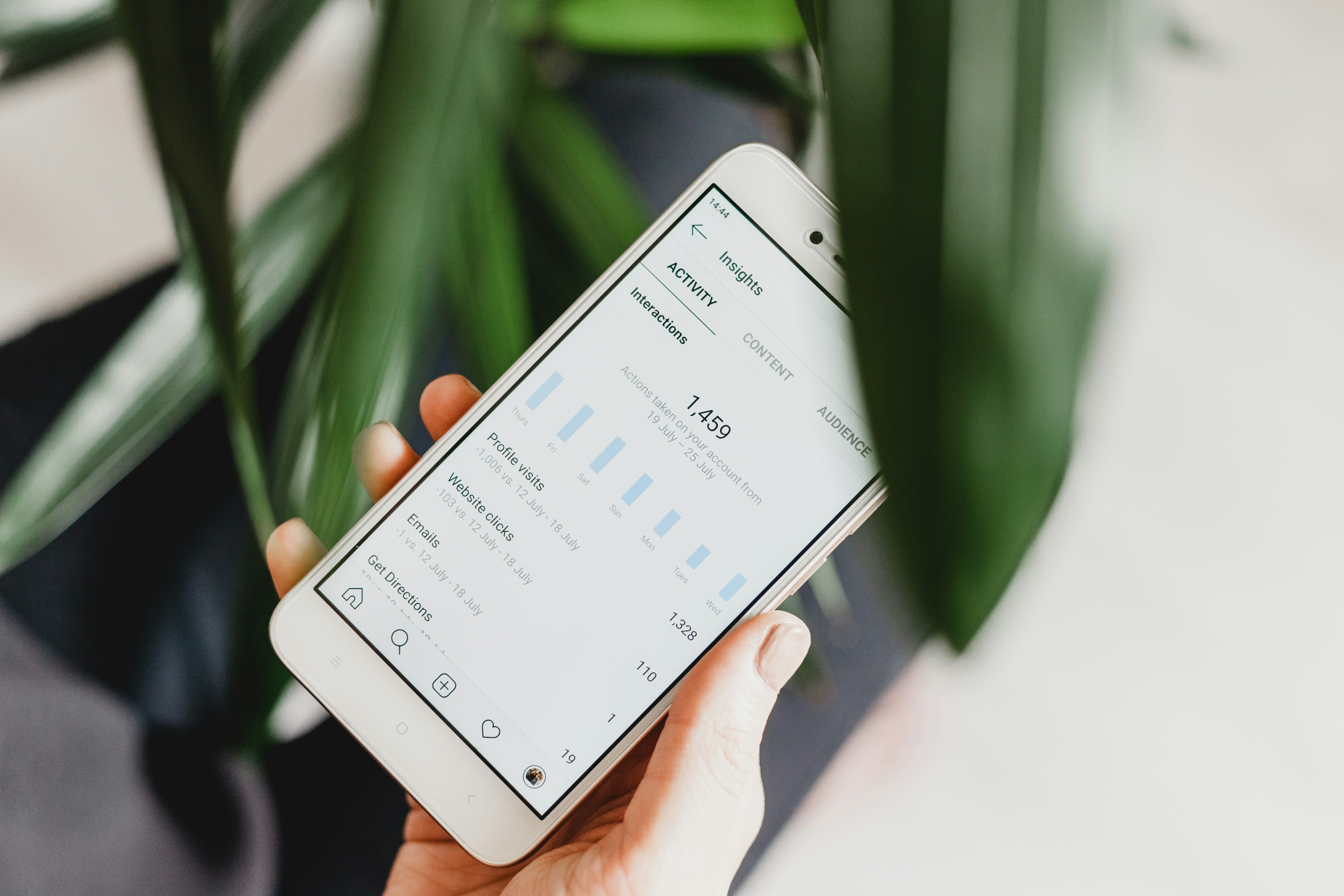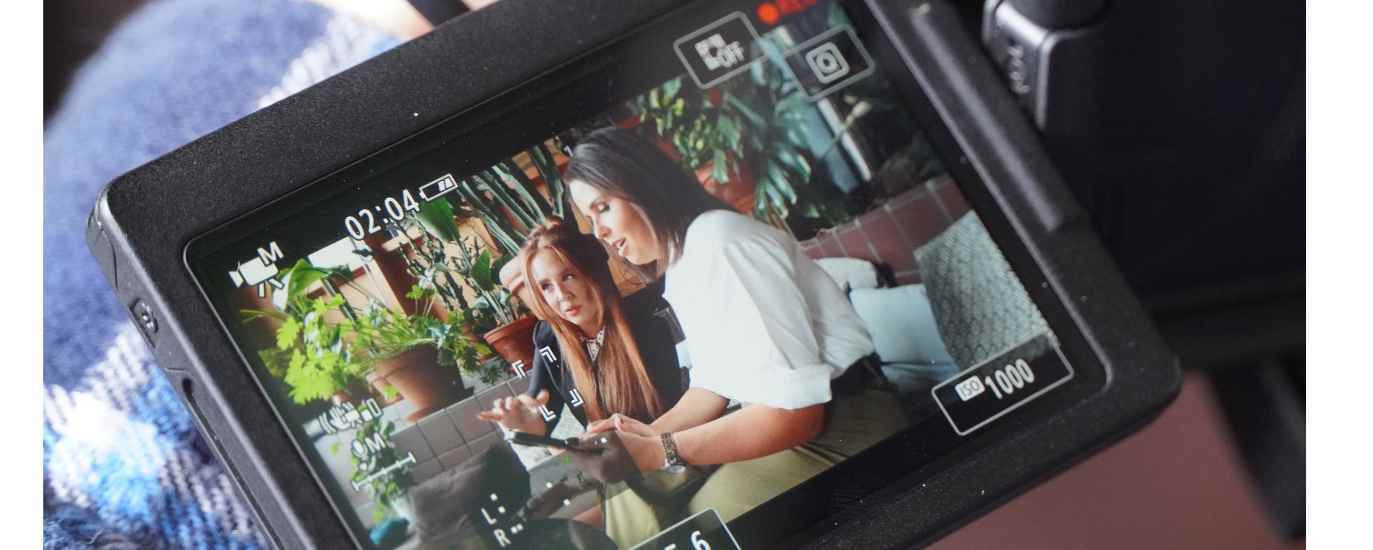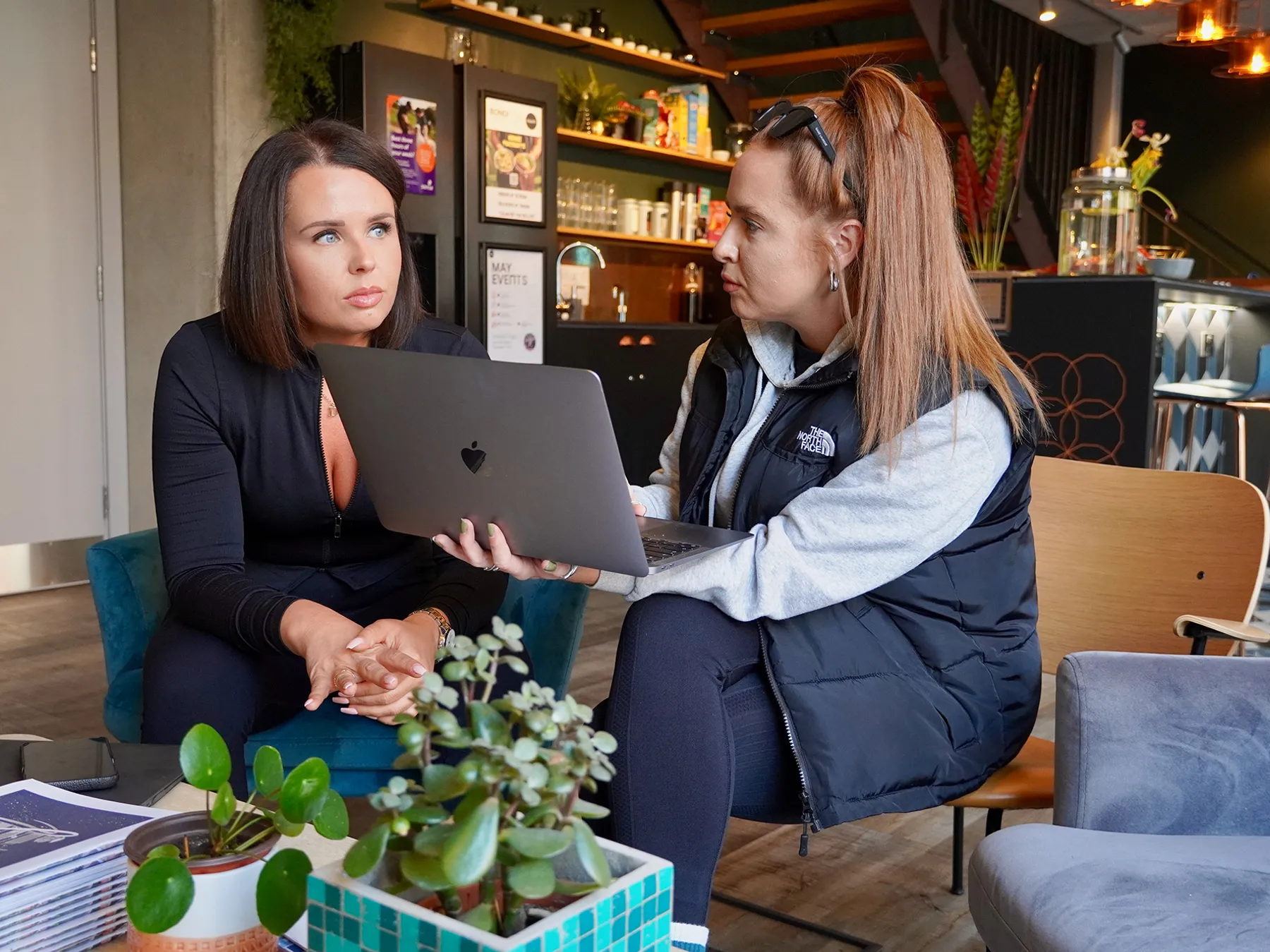Marketing Strategy
Branding
Activations
Social Media
Get to know us
The ROI of Brand Strategy: Why a Clear Plan Pays Off


Jordan Stachini
Contents
Ask most people what ROI means, and they’ll say sales revenue. The hard numbers that make the spreadsheets look sexy. And yeah obviously, sales matter. We’re not here to argue with the bottom line.
But not all ROI shows up as cash on day one. At co&co, we believe ROI is way bigger - we redefine ROI beyond just sales. All sales are conversions, but not all conversions are sales (read that again). Sometimes ROI is trust. Sometimes it’s recognition. Sometimes it’s building an audience that actually gives a sh*t about what you’re doing.
A clear brand strategy doesn’t just pay off in dollars – it pays off in so many other ways that are often neglected in traditional marketing.

What is a Brand Strategy?
Brand strategy is the blueprint for how your brand shows up in the world, so yeah you could say brand strategy is extremely important for your business. Forget obsessing over logos and colours because they’re not the whole picture.
Let’s unpack brand strategy. Brand strategy is the plan that defines who you are, what you stand for, who you’re talking to, and how you talk to them. It gives you clarity and direction so every decision supports your bigger goals. With the right strategy, you’re building something people trust and naturally want to be part of.
And here’s where brand DNA comes in. Your DNA is what we’d call your mission, vision, values, tone of voice, and proposition - the key elements of a winning brand strategy. This is the absolute core of your brand strategy. Once we have your brand DNA figured out, we can get the ball moving. This is what will help to keep you consistent, recognisable, and human across every channel.

Brand Strategy and ROI – How Do They Relate?
Brand strategy and ROI are tied at the hip. Without strategy, ROI is random. We see it all the time – people moving aimlessly, chasing numbers that don’t mean anything. You stare at your latest Instagram post, that little blue “Boost” button tempting you. You throw £50 at it, hoping for magic. A few likes trickle in, maybe a random follower, but nothing that actually makes an impact.
Or you fire up Google Ads, bid on the broadest keywords you can think of, and watch your budget vanish. You’ve spent money, sure, but on what? With strategy though, every dollar, post, and piece of content has a purpose.
Again, don’t be fooled thinking that ROI is just about sales. At co&co, we see ROI as every conversion that moves the needle – email sign-ups, shares, followers, event attendees, loyal fans. Strategy makes sure those conversions stack up into trust and loyalty – the stuff that keeps the sales coming long after the first campaign ends.

Look at Gymshark. They didn’t blow their early budget on ads. Instead, they focused on building communities through social media using fitness influencers and athlete partnerships. Every follow, every share, every piece of UGC was ROI — small wins stacking into massive brand recognition and loyalty. By the time sales took off, the groundwork was already done. That’s how you do brand strategy right.
Now let’s compare that to Protein World’s infamous “Are You Beach Body Ready?” campaign – a case that shows the danger of rebranding without research and brand strategy. Yeah it got attention, posters were plastered across the London Underground and even a Times Square billboard. But it sparked immediate outrage, protests, and a flood of negative press. Instead of building loyalty, it damaged trust - exactly why a lot of brand strategies fail. Instead of sparking conversions, it alienated huge parts of their potential audience. That’s ROI going backwards: dollars spent, reputation shredded, and no lasting growth.

Image source: dailymail.co.uk
It’s interesting that both these examples come from the fitness industry. Gymshark built its brand around empowerment and feeling good, making fitness about confidence and community, not just aesthetics. Protein World’s campaign pushed outdated beauty standards and body shaming.
Mental health is more important than ever, with 1 in 4 people in the UK experiencing a mental health problem each year (Mind, 2024). Protein World’s approach risked actively triggering the very audience it wanted to win. Gymshark proved that when you align your strategy with empowerment, you build loyalty. Protein World showed the cost of getting it wrong.
ROI is More Than Just Sales
If you measure ROI purely in transactions, you’re missing the bigger picture. Not every conversion is a sale, but every conversion is a step towards one.
Someone signs up to your newsletter? That’s ROI.
Someone shares your post with a mate? ROI.
Someone recognises your logo in a crowded market and remembers your name? ROI.
These moments might not hit the bank account straight away, but they compound over time. They’re trust signals. Every interaction is another brick in the wall of brand equity, and that wall is what keeps competitors from knocking you down. Let’s talk next about why each conversion = ROI.
Someone signs up to your newsletter? That’s ROI.
Why? Because you’ve earned a direct line into their inbox. That’s attention you don’t have to fight the algorithm for, and every email is a chance to build trust, educate, and eventually sell.
Someone shares your post with a mate? ROI.
That’s free distribution and word-of-mouth marketing. You’ve created content strong enough that people want to spread it for you, which extends your reach without spending a single dollar.
Someone recognises your logo in a crowded market and remembers your name? ROI.
That’s brand equity in action. Recognition builds trust, and trust is what tips the scales when they’re ready to buy. Even if they don’t convert today, you’ve moved them one step closer.
With a brand strategy, you’re building a system that turns every touchpoint into progress. It means all those likes, shares, clicks, sign-ups, and conversations are milestones on the path to loyalty and sales. Add them up over time, and that’s when the real ROI hits: steady, compounding growth that no quick campaign can deliver.

Consistency Builds Compounding Returns
We know it sounds cliché, and yeah, every marketing guru under the sun preaches about consistency but they’re not wrong. Consistency is the make-or-break of your brand. Without it, all your efforts scatter. With it, everything stacks together and delivers.
Why Consistency Matters Across Every Channel
When your brand looks, sounds, and feels the same across every channel, people start to recognise you. Think of it like McDonald’s or KFC. McDonald’s nails consistency on a global scale – same logo, same colours, same golden arches whether you’re in New York, Manchester or Tokyo. Sure, the menu flexes to local tastes, but the brand itself feels instantly familiar everywhere you go.
KFC does the same. Their core promise – the “original recipe” chicken taste – never changes, no matter where you are. The red bucket, the Colonel’s face, the “finger lickin’ good” vibe… it all stacks together to keep them unforgettable, even while they adapt the menu for different cultures.
Love them or hate them, that level of consistency is why these brands are burned into your memory 🍟. These are brand strategy success stories that are worth learning from. Even when you’re just driving past the golden arches or spotting a bucket on a billboard, you’re being nudged. That moment might not be a sale, but it’s a touchpoint that builds familiarity and trust. It’s priming you for the day you do pull into the drive-thru or order an Uber Eats.
That’s the hidden power of consistency. It’s not just about selling in the moment, it’s about every non-sale interaction stacking up until the decision to buy feels inevitable.

Recognition, Trust, and Loyalty = ROI
Recognition builds trust. Trust builds loyalty. And loyalty is ROI you can bank on.
Look at Tesco Clubcard. It’s wild how many people buy into it. Psychologically, it tricks us into thinking we’re saving a fortune – when in reality, we’re just paying the “normal” price while anyone without a Clubcard gets stung with inflated shelf prices. But the scheme builds recognition (those yellow tags scream “deal”), it builds trust (“Tesco’s looking out for me”), and it creates loyalty (“I’ll keep shopping here so I don’t miss out”).
The ROI isn’t just the sale at the till. People engage with the Clubcard everywhere: flicking through catalogues, browsing digital brochures, spotting yellow-tag deals on the shelf, even just carrying the card in their wallet. Each of those moments is recognition and brand reinforcement. Customers feel like they’re winning, Tesco locks in repeat business, and the tills keep ringing.
That’s ROI. Not just the transaction today, but the long-term behaviour change that keeps people coming back.

What Happens When You’re Inconsistent
Think of consistency as compound interest for your brand. The problem is, if you’re inconsistent, that recognition goes out the window. You can’t be one thing on Monday and something totally different on Friday. That means you can’t be posting polished, jargon-heavy LinkedIn updates that sound like they were ghostwritten by a lawyer and then fire out memes on Instagram trying to look cool and relatable. Why? Because your audience is then left scratching their heads, thinking, who the fu*k are these guys? You leave your audience confused and ‘confused’ isn’t a good look for you. When people can’t pin you down, they can’t trust you and they’re not going to stick around.
The Payoff of Consistency
When your brand shows up consistently, every interaction layers on top of the last. By the time a prospect is ready to buy, the decision feels easy. Here’s what that consistency actually pays out in:
Recognition – people see you, clock who you are, and actually remember you.
Trust – showing up the same way builds reliability, and reliability builds belief.
Loyalty – customers stick with brands they know and recognise, even when competitors shout louder.
Efficiency – your team isn’t reinventing the wheel every week. Strategy gives direction, saves time, and keeps everyone aligned.
Conversions – not just sales, but all the little steps (sign-ups, shares, clicks, DMs) that lead to them.
Consistency is a bit like stacking bricks. Each one seems small, but together, you’re building something strong and tangible.

Measuring ROI
Another thing worth mentioning is that even non-sale ROI can be measured. We like to say: If you aren't measuring, you aren't marketing. You're gambling, which is why crafting a marketing plan with ROI at the core matters.
Not every conversion is a sale, but you can still track the signals that show your brand’s working - the essence of ROI-driven marketing. These are the stepping stones that lead to sales later:
Email sign-ups – proof people want to hear from you again.
Content shares – your audience doing the marketing for you.
Engagement (likes, comments, saves) – signs your message is landing.
Downloads or resource access – people taking the next step toward trust.
Event registrations or attendance – community building in action.
Referral traffic – others pointing people your way.
Customer retention & repeat purchases – the clearest sign that loyalty is paying off.
They’re all proof that your brand strategy is doing its job. Ignore them, and you’ll only ever see half the picture. Track them, measure them, and you’ll see the real ROI of brand strategy stacking up.

The Long Game: Strategy Protects Your Bottom Line
A piece of advice for you all … stop chasing quick short-term wins. It’s tempting, yes. A flash sale, a viral TikTok, a campaign that gets a sudden spike in clicks – the truth is, there’s no longevity in it. Those wins are sugar highs. They might spike numbers, but without strategy, the spikes don’t last. You’re left scrambling for the next quick fix and burning through the budget … fast.
A solid brand strategy keeps you out of panic mode. It gives you a roadmap so you’re not guessing your next move. It builds an identity and a voice that people trust, which means even if the hype dies down, your audience is still with you. Strategy is what turns fleeting attention into lasting loyalty and that’s the kind of ROI that actually protects your bottom line.
ROI isn’t just about the revenue you might make today. It’s more about setting yourself up for sustainable growth. The beauty of sustainable growth is that it compounds, and each step forward builds on the last, creating a momentum that keeps working long after the launch settles.
You need to build a brand that can weather the dry spells, the market dips, and the next trend everyone else is chasing. Brand strategy is what gives you that backbone.
If you want ROI that compounds (sales and beyond) it’s time to start making those big moves. Get your brand strategy sorted, and watch the long-term pay-off roll in.

Speak to Jordan today
Grab a brew. Have a read
You might also like...






